|
King Athelstan is considered by many to be the first king of England; he was the grandson of Alfred the Great. He died on this day in 939 and was buried in Malmesbury Abbey in Wiltshire. Athelstan, says the Anglo-Saxon chronicles was 'the lord of warriors and patron of heroes" and by the time of his death, he had secured England’s borders and introduced new laws. Of Athelstan's funeral, 12th-century chronicler William of Malmesbury wrote that 'many gifts in gold and silver were carried before the body, as well as many relics of saints, bought in Brittany, for such were the objects on which he expended the treasure accumulated and left untouched by his father.' William of Malmesbury also viewed the king's remains and of what he saw he wrote 'the king as not above the average height, slim in build with fair hair 'as I have seen for myself in his remains, beautifully intertwined with golden threads.'
0 Comments
According to the Anglo-Saxon Chronicle, it was on this day in 1087, that William Rufus, the second son of William the Conquer was hastily crowned King William II at Westminster Abbey by Bishop Lanfranc. The records state that 'all the men in England bowed themselves before him and swore oaths.' That wasn’t entirely true. William arrived in London two weeks after the death of his father, enough time, writes historian Franck Barlow for those English men of importance to have their say but not enough time for rebel barons to cross to Normandy, to muster support from Robert Curthose, Rufus's older brother.
On their father's death bed, Curthose and Rufus had agreed to be each other's heir, but this peace did not last long, by 1088 Curthose was on his way to join the rebellious barons and remove Rufus from the throne. In the late evening of the 17th June 1239 Edward I was born to Henry III and Eleanor of Provence, he was probably named after Edward the Confessor. On the death of his father in 1272, Edward inherited the English throne. He would build castles in Wales to subdue the Welsh and make his son the first Prince of Wales. By 1290, he moved on to Scotland and angered the Scottish nobility by deciding who would succeed to the Scottish throne. He chose John Balliol. In retaliation the Scottish deposed Balliol and formed an alliance with France. Edward then invaded Scotland, imprisoned Balliol in the Tower of London and placed the Scottish people under English rule. For this he was given the name of Hammer of the Scots. Edward had a second nickname, that of Longshanks because of his height - he was six foot two. Historian Michael Prestwich wrote of this that Edward's "Long arms gave him an advantage as a swordsman, long thighs one as a horseman'
For whom the possessed sea littered, on both shores,
Ruinous arms; being fired, and for good, To sound the constitution of just wars, Men, in their eloquent fashion, understood. Relieved of soul, the dropping-back of dust, Their usage, pride, admitted within doors; At home, under caved chantries, set in trust, With well-dressed alabaster and proved spurs They lie; they lie; secure in the decay Of blood, blood-marks, crowns hacked and coveted, Before the scouring fires of trial-day Alight on men; before sleeked groin, gored head, Budge through the clay and gravel, and the sea Across daubed rock evacuates its dead. Geoffrey Hill, 1932 - 2016 On this day in 1328, King Edward III of England married Philippa of Hainault at York Minster, just eleven months after Edward had become king of England. Edward's father, King Edward II had sent the Bishop of Exeter to Hainaut to check out the four daughters of William, Count of Hainaut. In a letter to the king the Bishop writes of his impression of the fourteen-year-old Philippa. In the letter, he describes her as a child but it has been argued that the description is of Philippa's older sister Margaret. A description of Philippa can be found the register of the Bishop of Exeter which reads:
"The lady whom we saw has not uncomely hair, betwixt blue-black and brown. Her head is clean-shaped; her forehead high and broad, and standing somewhat forward. Her face narrows between the eyes, and the lower part of her face is still more narrow and slender than her forehead. Her eyes are blackish-brown and deep. Her nose is fairly smooth and even, save that it is somewhat broad at the tip and also flattened, and yet it is no snub-nose. Her nostrils are also broad, her mouth fairly wide. Her lips somewhat full, and especially the lower lip. Her teeth which have fallen and grown again are white enough, but the rest are not so white. The lower teeth project a little beyond the upper, yet this is but little seen. Her ears and chin are comely enough. Her neck, shoulders, and all her body are well set and unmaimed; and nought is amiss so far as a man may see. Moreover, she is brown of skin all over, and much like her father; and in all things, she is pleasant enough, as it seems to us. And the damsel will be of the age of nine years on St. John's day next to come, as her mother saith. She is neither too tall nor too short for such an age; she is of fair carriage, and well taught in all that becometh her rank, and highly esteemed and well-beloved of her father and mother and of all her meinie, in so far as we could inquire and learn the truth." Phillipa and Edward were married for forty years, she gave Edward thirteen children, three of them died as a result of the Black Death in 1348. On this day in 1382, the marriage of Richard II to Anne of Bohemia, Richard was eight months younger than Anne, they were both fifteen years of age. Anne was the daughter of the Holy Roman Emperor Charles IV and Elizabeth of Pomerania and was described at the time of her marriage by a Westminster chronicler as a ' tiny scrap of humanity'
Criticism of the match began when the king was forced to pay Wenceslas of Bohemia, Anne's brother, £4,000,000 (in today's money) for the right to marry his sister. Adding insult to injury Anne brought no dowry and her large entourage was paid for, in part, by the king. Anne was crowned queen of England two days later. Their twelve-year marriage was considered to have been a happy one but despite that there were no children and therefore no heir. Following Anne's death of the plague at the Sheen in 1394 Richard had the building demolished. In 1396 Richard would marry the seven-year-old Isabella of Valois. It has been claimed that Margaret, the second daughter of Henry III and Eleanor of Provence, was named after her aunt Margaret of Provence, the wife of King Louis IX of France. However, chronicler Matthew Paris states that she was named after Saint Margaret of Antioch who her mother called upon whilst giving birth. There is also some confusion over Margaret's date of birth which is stated as being either this day in 1240 or in the first weeks of October. By the age of eleven Margaret had married the ten year old King Alexander III of Scotland, and it was in Scotland that Margaret is said to have spent a great deal of time in a miserable existence. Margaret's first child a daughter, also Margaret and later queen of Norway, was born ten years after her marriage.
Alexander was Margaret's second child and heir to the throne of Scotland, his death three years after his brother David in 1281 would cause a succession crisis, this would end with one John Baillol being crowned as king of Scotland. Eventually, the enthronement of Baillol would lead to the Scottish Wars of Independence. But what of Margaret? She outlived her father by three years, she was present at the coronation of her elder brother Edward I as king of England in Westminster in the August 1274. Of Margaret it was written ‘She was a lady of great beauty, chastity, and humility, three qualities which are rarely found together in the same person.’ The discovery of jewellery and silver ingots in a field in Oxfordshire in October of 2015 has put the Anglo-Saxon period under the microscope, historian's suggesting that we should look again at how Alfred is perceived and whether he is entitled to hold the title of great. The above mentioned find is known as The Watlington Hoard and it contained rare Anglo-Saxon silver coins that were stamped with images of two Roman emperors along with the faces of Alfred and Ceolwulf, the last king of Mercia who died in 879. These coins are evidence that both men worked together to rid the country of the Viking's, but the suggestion that Alfred wasn't as great as we have been led to believe I would have to disagree with. Alfred's double success at Edington are a case in point, they show his skill as a warrior and a diplomat. Under Alfred, England took the first tentative steps to becoming a civilised, literate and an united country. As the old adage states, history is written by the victors, and Ceolwulf, who may well have been an effective leader, was not just out gunned, he was out shined. Alfred achievements were great, therefore, and in my opinion, it is a title deserved. However, the Victorian cult of King Alfred is in part to blame for how we see Alfred today. To the Victorians, Alfred was a perfect symbol of their perfect nation, but this was a double edged sword, by glossing over their failings, (bad housing conditions, infectious diseases and the early deaths of the poor) with the use of paintings, poems and heroic stories to represent heroic kings, no only show how great was the divide between rich and poor it served to muddle our understanding of Alfred and the time he lived in.
Today, in 1972 the uncrowned Edward VIII, the Duke of Windsor, who gave up the British throne in 1936 to marry an American divorcee, died in his home near Paris. Edward Albert Christian George Andrew Patrick David was 77 years old. A statement from Buckingham Place said:
"It is announced with deep regret that his Royal Highness, the Duke of Windsor, has died at his home in Paris at 2:25 A.M., Sunday, May 28, 1972. The Duke, who reigned for 10 months as King Edward VIII before abdicating, had been ill for some time had defied the British establishment to marry Mrs. Bessie Wallis Warfield Simpson, a twice-divorced American. The couple lived in virtual self-exile from Britain. The 3rd of February 1014 was the last day of the reign of Sweyn Forkbeard, he holds the title of England's shortest reigning King. On Christmas Day 1013 Forkbeard was declared king of England, and it was in our Lincolnshire town of Gainsborough that became his capital. It was here that he began to organise his new kingdom, but died this day one thousand and one years ago, having ruled England for only forty days. With the support of his son Cnut, he waged war on the English people. He is said to have been a brutal man, burning people alive and impaling them on lances. Historian Darron Childs says of Forkbeard brutality "It is perhaps one of the reasons why he has been largely forgotten. It's hard to make a big thing of someone so bad. It's a difficult thing to try and overcome." It is more than likely that the main reason this man is forgotten is because of lack of evidence. There is one fortification in Gainsborough, on the site of what is now the Old Hall, that is thought to have been where Forkbeard made his centre of his operations. Mr Child's believes that Gainsborough could have been where Forkbeard's son, Cnut, attempted to hold back the waves, not on the coast like we all imagine but at the Trent Aegir, a tidal bore, which takes its name from the Viking God of the Sea. After Forkbeard's death his embalmed body was returned to Denmark and the council of England sent for the deposed Aethelred to return as king. He arrived in the spring of 1014 and drove Cnut out of England. Cnut soon returned to became King of England in 1016. |
Archives
February 2024
Categories
All
After ten years in the workplace I became a mother to three very beautiful daughters, I was fortunate enough to have been able to stay at home and spend my time with them as they grew into the young women they are now. I am still in the position of being able to be at home and pursue all the interests I have previously mentioned. We live in a beautiful Victorian spa town with wooded walks for the dog, lovely shops and a host of lovely people, what more could I ask for.
All works © Andrea Povey 2014. Please do not reproduce without the expressed written consent of Andrea Povey. |
- Home
-
My Family Stories
- Bustaine of Braunton: Introduction
- Hunt of Barnstaple Introduction >
- Lakeman of Mevagissey >
- Meavy Introduction >
- Mitchell of Crantock: An Introduction >
- Mohun of Dunster: Introduction >
- Purches of Hampshire and Cornwall >
- Scoboryo of St Columb Major >
-
Thomas Vaughan: An Introduction
>
- Smith of Barkby Introduction >
- Taylor Introduction >
- Tosny of Normandy >
- Toon of Leicestershire: Introduction >
- Underwood of Coleorton Introduction
- Umfreville of Devon >
- Other Families
- History Blog
- Wars of the Roses Blog
- The Ancestors
- A to E
- F to J
- K to O
- P to T
- U to Z
- Hendley of Coursehorne Kent
- Pigott Family of Whaddon Buckinghamshire
- Links
- Contact
- Umfreville test

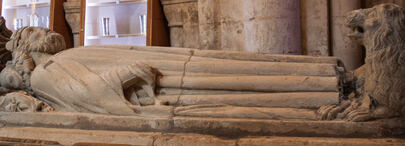
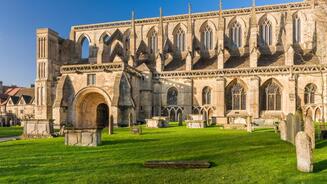
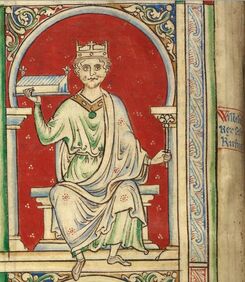




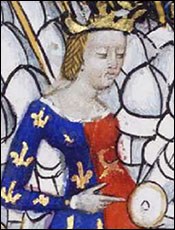
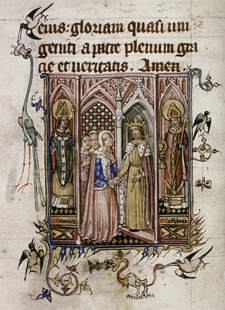










 RSS Feed
RSS Feed
